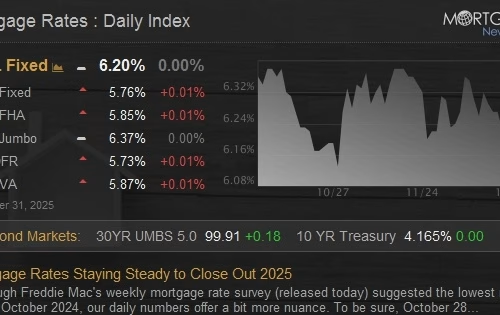Summary:
The 2024 HECM (Home Equity Conversion Mortgage) program shows a negative guaranteed loan subsidy rate of -2.87%, indicating profitability for the federal government. Projections suggest slight fluctuations in 2025 (-2.65%) and 2026 (-3.13%). The MMI Fund’s HECM budget authority reflects similar trends, with forward mortgage insurance volumes significantly outpacing HECM. The Biden administration’s final MMI report highlighted a positive HECM capital ratio, though future impacts of potential HUD funding cuts remain uncertain.
What This Means for You:
- Reverse Mortgage Borrowers: Continued program stability suggests reliable access to HECM loans, but monitor potential policy changes under the Trump administration.
- Lenders & Investors: Higher interest rates may pressure origination volumes—optimize warehouse lines and risk management strategies.
- Taxpayers: Negative subsidy rates mean HECMs remain cost-neutral, but future budget shifts could alter this dynamic.
- Watch for HUD’s 2026 Budget Brief: Legislative recommendations or administrative changes to HECM may emerge, impacting program terms.
Original Post:
Document details
The guaranteed loan subsidy rate — which measures the receipts produced by the program for the federal government — was -2.87% in 2024. The negative rate indicates that HECMs generated receipts, whereas a positive figure would have required a subsidy from the government on the portfolio, costing taxpayers money.
The negative rate is projected to dip slightly this year to -2.65% before rising again in 2026 to -3.13%.
The same trend is observed in the HECM portion of the MMI Fund’s guaranteed loan subsidy budget authority. In 2024, the figure stood at -$383 million, and it’s projected to fall slightly to -$376 million in 2025 before a larger 2026 projection of -$474 million. The figures are identical for actual and estimated MMI HECM budget outlays.
The budget document continues to show that forward mortgage insurance, understandably, continues to outpace HECM insurance. OMB estimates about $300 billion for projected forward mortgage insurance volume versus the $15 billion figure it provides for the HECM program.
“The Budget requests $160 million in the MMI Program account for administrative expenses to support a range of [Federal Housing Administration (FHA)] functions, such as loan underwriting and servicing, claims processing, and risk monitoring,” the document explained. “The Budget also requests a limitation of $400 billion on loan guarantees for the MMI Fund.”
Above the stated estimated insurance figures, OMB also accounts for “additional commitment authority available in case these amounts are exceeded during execution.”
Further information about the perspective of the Trump administration on the HECM program will come when HUD releases its specific fiscal year 2026 budget in brief. But this is also based on estimates from OMB and not actual cash, so it’s possible that some of these figures could be revised by the time 2025 and 2026 data is available.
Prior report
In the final MMI report of the Biden administration, submitted as part of HUD’s Annual Report to Congress in November 2024, the HECM portion of the MMI Fund reached a positive capital ratio for the fourth year in a row on the overall government-backed portfolio.
In 2023, the HECM capital reserve declined slightly due to weaker levels of home-price appreciation. Last year, however, that metric was stronger, leading to a 7.78% increase in the HECM standalone capital ratio compared to one year earlier.
The health of the HECM book of business remained strong at that time from FHA’s perspective, as its economic value increased while the overall portfolio recovered from prior issues. But it remains to be seen what impacts proposed cuts to HUD funding could have on FHA programs, including reverse mortgages.
Looking ahead
The HECM program was not explicitly mentioned in the “skinny budget” proposal, but HUD’s outstanding budget document could include new information that might list either legislative or administrative recommendations for the HECM program.
In a February 2025 editorial published by HousingWire, former HUD deputy secretary and FHA Commissioner Brian Montgomery mentioned the department’s reverse mortgage programs as issues that now-incumbent HUD Secretary Scott Turner will need to navigate during the second Trump term.
“HUD’s reverse mortgage portfolio continues to experience stress largely due to the current interest rate environment,” Montgomery wrote at the time. “Despite a seemingly strong capital position as reflected in the most recent report to Congress, higher interest rates have slowed the origination volume and significantly impacted lenders’ warehouse lines.”
Extra Information:
HUD’s HECM Program Page – Official details on eligibility, lender requirements, and policy updates.
CFPB Reverse Mortgage Guide – Consumer-focused explanations of risks and benefits.
People Also Ask About:
- How does the HECM subsidy rate affect borrowers? Negative rates mean lower taxpayer burden, but borrowers should still compare lenders for optimal terms.
- Will HUD funding cuts reduce HECM availability? Unlikely in the short term, but program adjustments (e.g., loan limits) could follow.
- Why do forward mortgages dominate HECM in volume? Traditional mortgages serve broader demographics, while HECMs target seniors (62+).
- How do interest rates impact reverse mortgages? Higher rates reduce loan proceeds and lender profitability, tightening market conditions.
Expert Opinion:
Brian Montgomery’s warning about interest rate pressures underscores a critical vulnerability: HECM’s sustainability hinges on macroeconomic stability. While current capital ratios appear robust, lenders must prepare for volatility—especially if HUD’s budget constraints lead to reduced FHA support for reverse mortgages.
Key Terms:
- HECM subsidy rate 2024
- MMI Fund budget authority reverse mortgages
- FHA HECM capital ratio trends
- Trump administration HUD funding cuts
- reverse mortgage interest rate impact
ORIGINAL SOURCE:
Source link
Automatic Mortgage Calculator
Welcome to our Automatic Mortgage Calculator 4idiotz! Please just add your figures in the correct sections below and the Automatic Mortgage Calculator will automatically calculate the results for you and display them at the bottom of the page.




